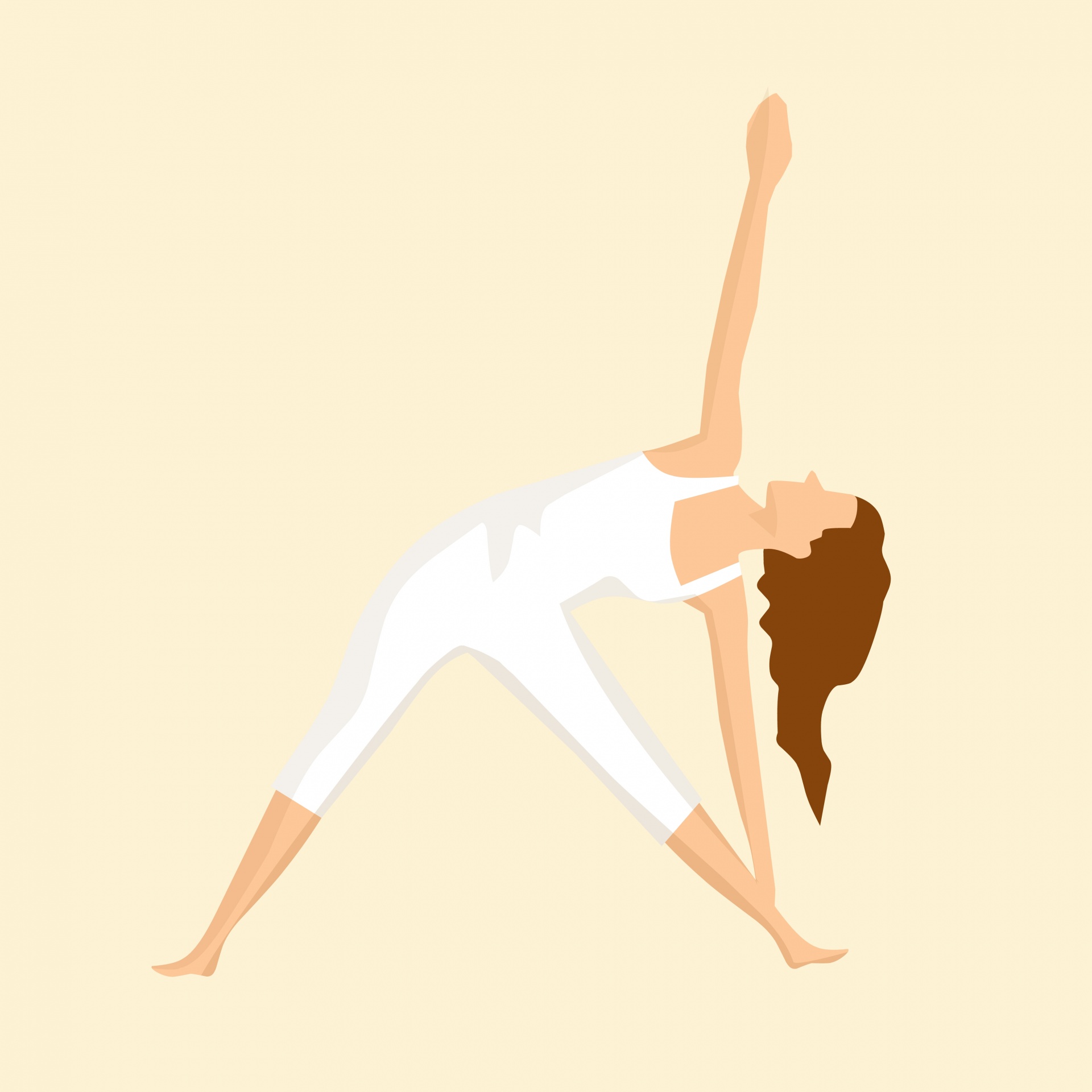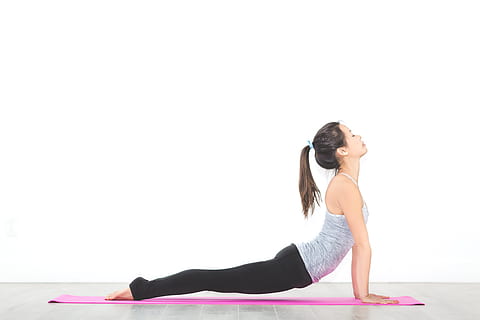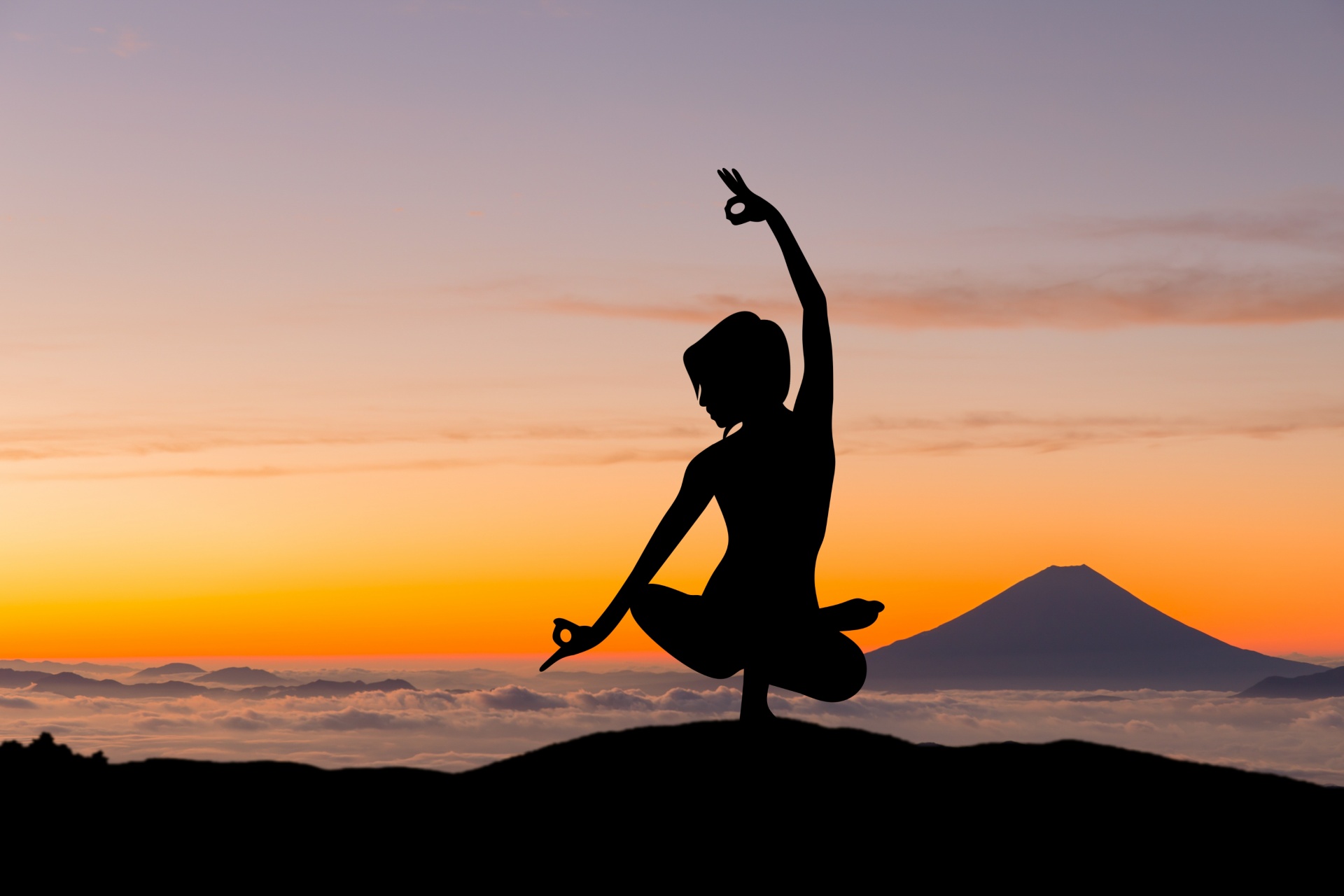How Yoga Can Help You Manage Type 2 Diabetes
Yoga can be a great way to help manage Type 2 diabetes. Here’s our in depth article
If you have type 2 diabetes, you know how important it is to keep your blood sugar levels under control. High blood sugar can lead to serious complications, such as nerve damage, kidney disease, heart disease, and vision loss.
But managing diabetes is not just about taking medications and following a healthy diet. It also involves taking care of your physical and mental well-being. And one of the best ways to do that is by practicing yoga.
Yoga is an ancient practice that combines physical poses, breathing exercises, and meditation. It can help you improve your strength, flexibility, balance, and relaxation. But did you know that yoga can also help you with your diabetes?
In this article, we will explore how yoga can benefit people with type 2 diabetes and what poses you can try at home or in a class. We will also give you some tips on how to get started and what to watch out for.

Figure 1: Yoga can help to manage Type 2
The Benefits of Yoga for Type 2 Diabetes
Yoga can help you manage your type 2 diabetes in several ways:
- Lowering stress levels. Stress can raise your blood sugar levels by triggering the release of hormones such as cortisol and adrenaline. These hormones make your liver produce more glucose and make your cells less sensitive to insulin. Yoga can help you lower your stress levels by teaching you how to breathe deeply, relax your muscles, and calm your mind. One study from 2013 found that yoga can improve specific chemical balances in the brain to help reduce stress levels.
- Improving emotional well-being. Living with diabetes can take a toll on your mental health. You may feel anxious, depressed, frustrated, or isolated. Yoga can help you improve your emotional well-being by helping you stay in the present moment and develop a positive attitude. Yoga is a form of mindfulness that helps you focus on your breath, body, and sensations rather than on your worries or negative thoughts.
- Boosting strength and balance. Yoga involves a number of poses that aim to help you improve your strength, flexibility, and balance. These qualities are important for people with diabetes, as they can help prevent falls, injuries, and muscle loss. One mouse study from 2019 suggested that improving strength may help reduce liver fat and improve blood glucose levels in people with obesity and diabetes². Some people with diabetes experience peripheral neuropathy due to nerve damage. In some cases, this can affect muscle strength and mobility. Building up strength through exercise may help people manage these effects.
- Protecting heart health. People with diabetes have a higher risk of developing cardiovascular diseases, such as high blood pressure, high cholesterol, and heart attack. Yoga can help protect your heart health by lowering your blood pressure and improving your blood circulation. The American Heart Association (AHA) list a number of reasons that yoga is good for health, including heart health³. They cite a study in which people with a type of atrial fibrillation practiced yoga and breathing exercises. After 12 weeks, the participants had a lower heart rate and lower blood pressure than those who did not practice yoga.
Yoga Poses for Type 2 Diabetes
There are many types of yoga styles and poses that you can choose from depending on your preferences and abilities. However, some poses may be more beneficial for people with type 2 diabetes than others.
Here are some examples of yoga poses that may help lower your blood sugar levels, improve your insulin sensitivity, stimulate your abdominal organs, or reduce your stress levels:
- Legs-Up-the-Wall Pose. This is a restorative inversion that allows for relaxation. It can also help relieve headaches, boost energy, and increase circulation.
To do this:
- Fold up a blanket or towel to sit on.
- Sit with your right side against a wall.
- Swing your legs up along the wall as you move to lay flat on your back.
- Your body should form a 90-degree angle against the wall.
- Keep your sitting bones as close to the wall as possible.
- Relax your neck, chin, and throat.
- Stretch your arms out to the side with your palms facing up.
- Remain in this pose for 5 to 15 minutes.
- Release by slowly sliding your legs down to the side.
- Reclining Bound Angle Pose. This is a restorative pose that can help calm your nervous system. This pose can also help reduce your stress levels, which may help lower blood pressure and blood sugar levels. It’s also thought to stimulate the abdominal organs, bladder, and kidneys.
To do this:
- While seated, bring the soles of your feet together. Your knees should be out to the sides. You may place a bolster underneath your knees for support.
- Slowly lean back until your back is flat on the floor.
- Relax the area around your hips.
- Rest your hands alongside your body with your palms facing up.
- You can also press down on your thighs to gently deepen the stretch in your legs and hips.
- Stay in this pose for up to 10 minutes.
- To release, use your hands to lift and press your knees together. Slowly sit all the way up.

Figure 2: Yoga can help with Type 2
- Seated Forward Bend. This pose is a therapeutic forward bend. In addition to lowering blood pressure and promoting weight loss, this pose may help relieve anxiety, headache, and fatigue.
To do this:
- Sit on the edge of a folded blanket and extend your legs long. You may place a prop under your knees for support.
- Imagine that you’re pressing the soles of your feet against a wall so that your toes are drawing back toward your shins.
- Root into your sit bones, lengthen your spine, and open your heart center.
- Inhale and raise your arms overhead.
- Exhale and fold forward from your hips, reaching for your feet or shins with your hands.
- Keep your back straight and avoid rounding your shoulders or neck.
- Stay in this pose for up to 5 minutes, breathing deeply and relaxing into the stretch.
- To release, inhale and lift your torso up. Lower your arms and relax.
- Supported Shoulderstand. This is an inversion pose that can help improve blood circulation, especially to the head and neck. It can also help regulate thyroid function, which is important for metabolism and blood sugar control.
To do this:
- Lie on your back with a folded blanket or towel under your shoulders. Your head should be on the floor and your neck should be free of tension.
- Bend your knees and bring them close to your chest.
- Place your palms on your lower back and lift your hips and legs up toward the ceiling.
- Straighten your legs and point your toes up. Keep your elbows on the floor and support your back with your hands.
- Align your body in a straight line from your shoulders to your feet. Do not turn or tilt your head or neck.
- Breathe normally and hold this pose for up to 5 minutes.
- To release, bend your knees and bring them back to your chest. Roll onto your right side and slowly sit up.
- Plow Pose. This is another inversion pose that can help improve blood circulation, especially to the head and neck. It can also help stimulate the thyroid gland, which regulates metabolism and blood sugar levels.
To do this:
- Lie on your back with a folded blanket or towel under your shoulders. Your head should be on the floor and your neck should be free of tension.
- Bend your knees and bring them close to your chest.
- Place your palms on your lower back and lift your hips and legs up toward the ceiling.
- Straighten your legs and lower them over your head until your toes touch the floor behind you. You may bend your knees slightly if needed.
- Keep your elbows on the floor and support your back with your hands.
- Align your body in a straight line from your shoulders to your feet. Do not turn or tilt your head or neck.
- Breathe normally and hold this pose for up to 5 minutes.
- To release, bend your knees and bring them back to your chest. Roll onto your right side and slowly sit up.
- Upward-Facing Dog. This is a backbend pose that can help stretch and strengthen the spine, chest, abdomen, and arms. It can also help improve posture and breathing, which are important for people with diabetes.
To do this:
- Lie on your stomach with your legs extended behind you and your toes pointing back.
- Place your palms on the floor next to your chest, with your elbows bent and close to your body.
- Inhale and press into your palms to lift your torso, hips, and legs off the floor. Only the tops of your feet and hands should touch the floor.
- Straighten your arms and roll your shoulders back. Lift your chest and look forward or slightly up.
- Keep your legs active and engaged. Do not let them sag or splay out.
- Breathe deeply and hold this pose for up to 3 minutes.
- To release, exhale and lower yourself back to the floor.

Figure 3: Upward facing Dog
- Bow Pose. This is another backbend pose that can help stretch and strengthen the spine, chest, abdomen, and arms. It can also help stimulate the abdominal organs, such as the pancreas, liver, and kidneys.
To do this:
- Lie on your stomach with your legs extended behind you and your toes pointing back.
- Bend your knees and reach back with your hands to grab the outer edges of your ankles or feet.
- Inhale and lift your chest and thighs off the floor, pulling your heels toward your buttocks.
- Keep your head up and look forward or slightly up.
- Breathe deeply and hold this pose for up to 3 minutes.
- To release, exhale and lower your chest, thighs, and legs to the floor.
- Half Lord of the Fishes Pose. This is a twisting pose that can help massage and stimulate the abdominal organs, such as the pancreas, liver, and kidneys. It can also help improve digestion, detoxification, and blood circulation.
To do this:
- Sit on the edge of a folded blanket and extend your legs long.
- Bend your right knee and place your right foot on the floor outside your left thigh.
- Bend your left knee and tuck your left foot under your right thigh.
- Inhale and raise your left arm overhead.
- Exhale and twist to the right, placing your left elbow outside your right knee and your right hand on the floor behind you.
- Keep your spine long and your shoulders relaxed.
- Look over your right shoulder or straight ahead.
- Breathe deeply and hold this pose for up to 1 minute.
- To release, inhale and untwist to the center. Switch sides and repeat.
- Supine Spinal Twist. This is another twisting pose that can help massage and stimulate the abdominal organs, such as the pancreas, liver, and kidneys. It can also help relieve lower back pain, improve spinal mobility, and reduce stress.
To do this:
- Lie on your back with your legs extended and your arms out to the sides at shoulder level.
- Bend your right knee and bring it across your body to the left side. You may place a prop under your knee for support.
- Keep both shoulders on the floor and turn your head to the right.
- Breathe deeply and hold this pose for up to 3 minutes.
- To release, inhale and bring your knee back to the center. Switch sides and repeat.
- Child’s Pose. This is a relaxing pose that can help calm your mind, lower your blood pressure, and ease tension in your back, neck, and shoulders. It can also help stretch your hips, thighs, and ankles.
To do this:
- Kneel on the floor with your knees hip-width apart and your feet together behind you.
- Sit back on your heels and lower your torso over your thighs.
- Stretch your arms forward on the floor or rest them alongside your body with your palms facing up.
- Rest your forehead on the floor or on a prop if needed.
- Breathe deeply and hold this pose for up to 5 minutes.
- To release, inhale and lift your torso up and relax.

Figure 4: Yoga and Type 2
Tips for Getting Started with Yoga for Diabetes
If you are interested in trying yoga for diabetes, here are some tips to help you get started:
- Consult your doctor. Before starting any new exercise program, it is advisable to consult your doctor, especially if you have any medical conditions or complications related to diabetes. Your doctor can advise you on how to monitor your blood sugar levels, adjust your medications, and prevent hypoglycemia or low blood sugar during or after exercise.
- Choose a suitable style. There are many types of yoga styles and classes available, ranging from gentle and relaxing to vigorous and challenging. Depending on your fitness level, preferences, and goals, you may want to choose a style that suits you best. For example, hatha yoga is a common style that involves basic poses and breathing techniques. Vinyasa yoga is a more dynamic style that involves flowing from one pose to another in sync with your breath. Bikram yoga is a hot yoga style that involves practicing in a heated room to increase sweating and detoxification.
- Find a qualified teacher. If you are new to yoga, it is recommended to find a qualified teacher who can guide you through the poses and correct your alignment. A good teacher can also help you modify the poses according to your abilities and limitations. You may want to look for a teacher who has experience working with people with diabetes or other health conditions.
- Start slowly and gradually. As with any exercise, it is important to start slowly and gradually build up your intensity and duration. Do not push yourself beyond your comfort zone or force yourself into poses that cause pain or discomfort. Listen to your body and respect its signals. Take breaks when needed and drink plenty of water to stay hydrated.
- Enjoy the process. Yoga is not only a physical exercise but also a mental and spiritual practice. It can help you connect with yourself, others, and nature. It can also help you cultivate gratitude, joy, and peace. Enjoy the process of learning and practicing yoga and appreciate the benefits it can bring to your health and well-being.
Conclusion
Yoga is a holistic practice that can help people with type 2 diabetes manage their blood sugar levels and prevent complications. Yoga can also help lower stress levels, improve emotional well-being, boost strength and balance, and protect heart health.
There are many types of yoga styles and poses that you can choose from depending on your preferences and abilities. However, some poses may be more beneficial for people with type 2 diabetes than others.
In this article, we have explored how yoga can benefit people with type diabetes and what poses you can try at home or in a class. We have also given you some tips on how to get started and what to watch out for.
Yoga is a safe and effective way to improve your physical and mental health. It can also help you cope with the challenges and stresses of living with diabetes. By practicing yoga regularly, you can enjoy a better quality of life and a happier outlook.
We hope this article has inspired you to give yoga a try and discover its benefits for yourself. Remember to consult your doctor before starting any new exercise program and to monitor your blood sugar levels closely. And most importantly, have fun and enjoy the journey!
Further reading
(1) Yoga, Other Mindfulness Practices Improve Blood Sugar in Type 2 Diabetes. https://www.webmd.com/diabetes/news/20221014/yoga-other-mindful-practices-improve-blood-sugar-type-2-diabetes. (2) Yoga for Diabetes: 11 Poses to Try - Healthline. https://www.healthline.com/health/diabetes/yoga-for-diabetes. (3) 7 yoga poses for diabetes - Medical News Today. https://www.medicalnewstoday.com/articles/317381. (4) Diabetes and Yoga. https://www.diabetes.co.uk/yoga-and-diabetes.html. (5) Yoga for Diabetes: Does It Work? - WebMD. https://www.webmd.com/diabetes/yoga-diabetes-poses.
Scientific References
Kamei T, Toriumi Y, Kimura H, Ohno S, Kumano H, Kimura K. Decrease in serum cortisol during yoga exercise is correlated with alpha wave activation. Percept Mot Skills. 2000 Jun;90(3 Pt 1):1027-32. doi: 10.2466/pms.2000.90.3.1027. PMID: 10883793.
Lee JH, Kim JH, Kim DY, Lee YJ, Lee JW, Lee JH, Lee DC, Kim KS, Cho KH. Effects of resistance exercise on muscle strength, endurance, and motor unit according to ciliary neurotrophic factor polymorphism in male college students. J Sports Sci Med. 2013 Sep 1;12(3):504-9. PMID: 24149150; PMCID: PMC3772581.
American Heart Association (AHA). Yoga and heart health [Internet]. Dallas (TX): AHA; 2017 [cited 2021 Jan 25]. Available from: https://www.heart.org/en/healthy-living/fitness/fitness-basics/yoga-and-heart-health
Lakkireddy D, Atkins D, Pillarisetti J, Ryschon K, Bommana S, Drisko J, Vanga S, Dawn B. Effect of yoga on arrhythmia burden, anxiety, depression, and quality of life in paroxysmal atrial fibrillation: the YOGA My Heart Study. J Am Coll Cardiol. 2013 Mar 19;61(11):1177-82. doi: 10.1016/j.jacc.2012.11.060. Epub 2013 Jan 30. PMID: 23375926.